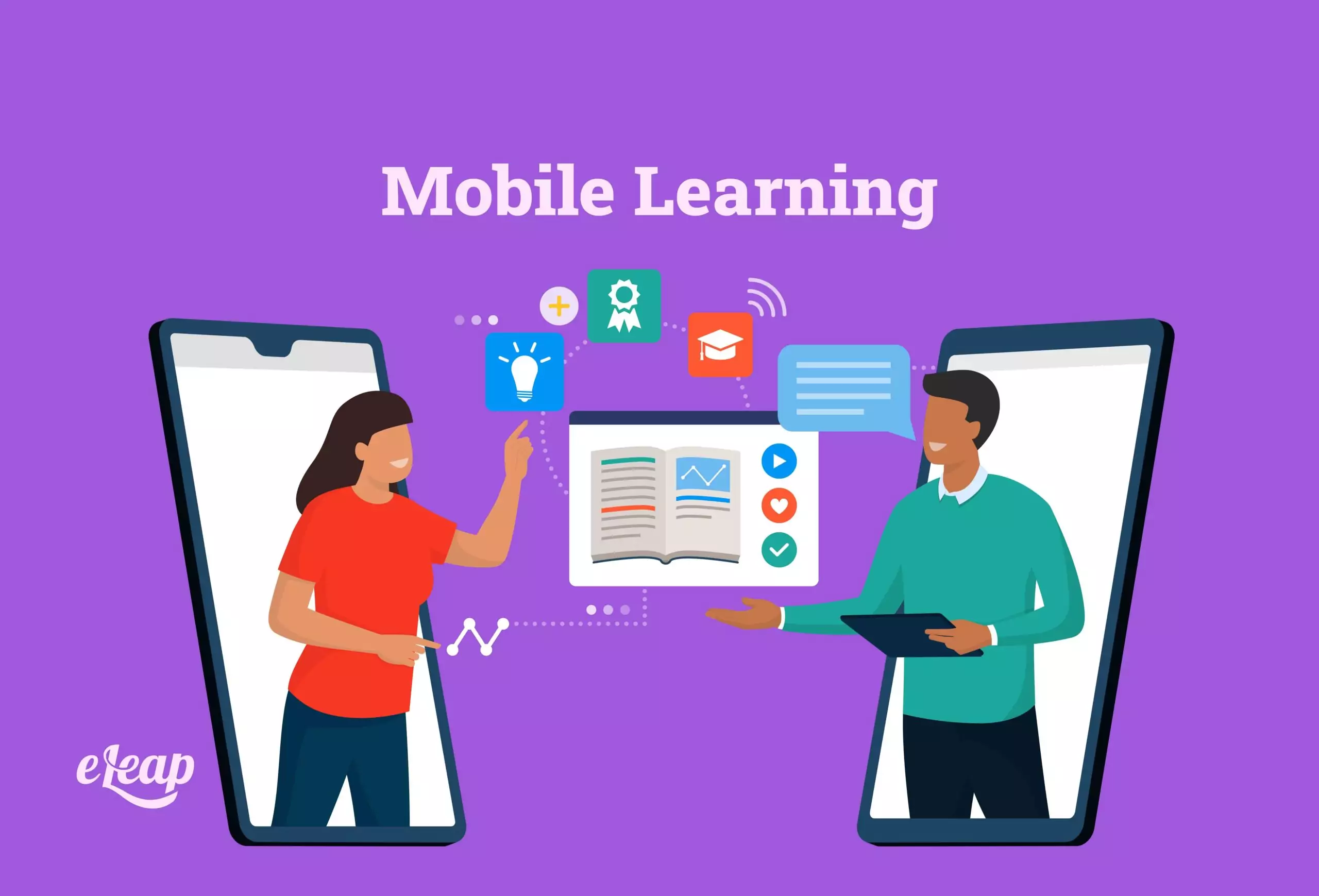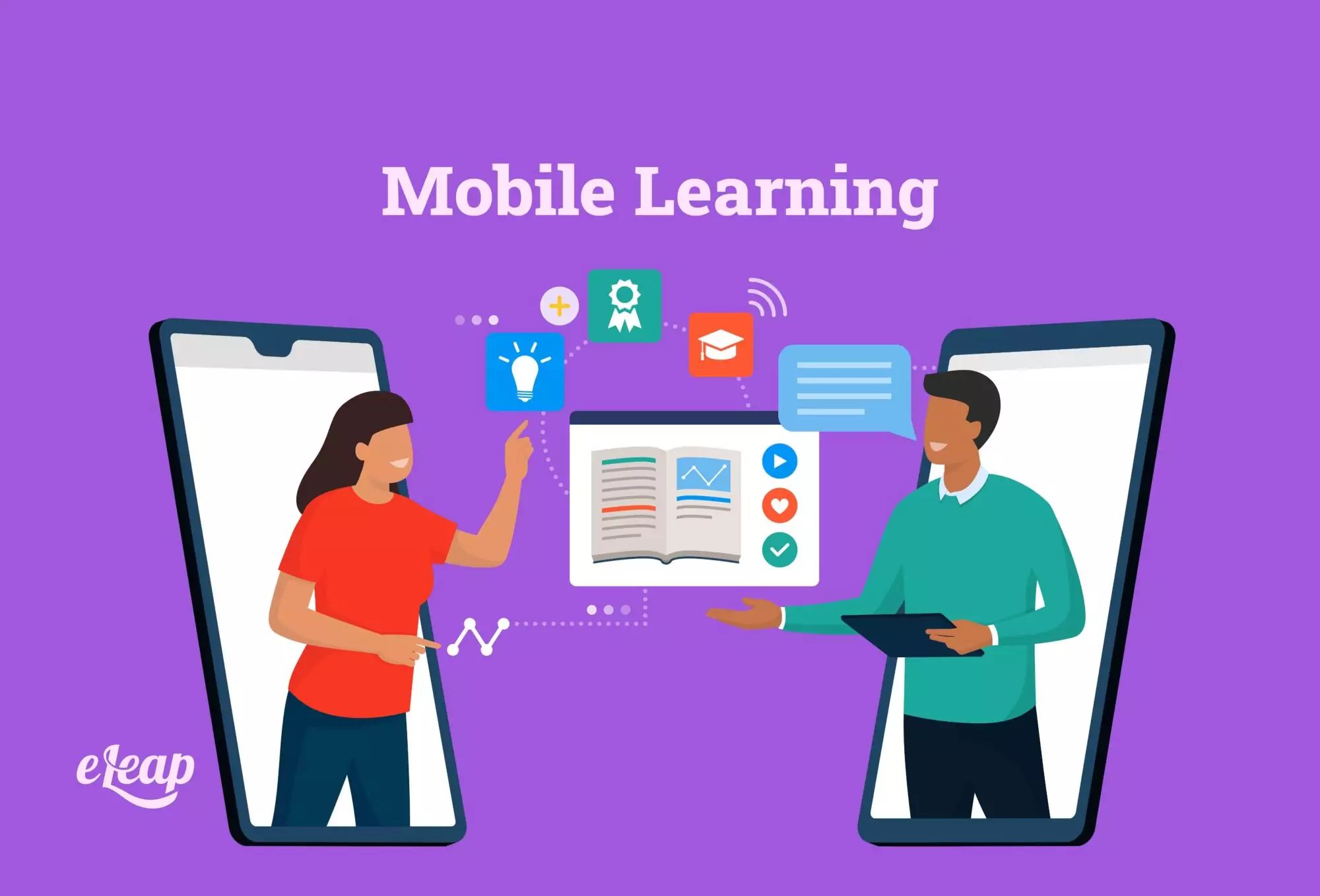Mobile Learning

The day people traded in their flip phones for “touchscreens” (known today as smartphones), we transformed the way we interact with technology. In fact, the entire approach to marketing across the globe has shifted completely.
Various methods that were in place just a decade ago are considered obsolete. There are completely new mediums to distribute content and material, and the channels we use now are completely different.
Instead of billboards showing us the most popular products, our social media feeds contain this information. We no longer learn through textbooks or instructional videos. Instead, we use podcasts as opposed to classrooms.
We don’t grab the morning paper to learn about current events – we read the front page of Google. The power of mobile technology has changed the way we experience life, and it’s continuing to change.
Nearly everybody has an issue with using their smartphone too much. However, the new workforce consisting of millennials is glued to their phones. This can be used as an advantage by leveraging the power of mobile learning with your LMS.

Mobile LMS On the Go
It hasn’t taken long for LMS creators to understand that learning on mobile devices would change how learners consume content when they’re not at work. They realized how much it would increase engagement.
Because of this, mobile learning has become a necessary component of almost every LMS platform or eLearning program in general.
What Is Mobile Learning?
Mobile learning can be defined as a way of participating in your company’s learning content from any tablet or smartphone. Employees are able to access course material and support from anywhere in the world at any given time.
This is a stark contrast to enterprise learning that the corporate world was used to in years prior.
Mobile learning assists employee training by bringing learning into the natural flow of remote work and allows real-time access to multiple resources they need to fulfill their roles. For example, if a team member in the field has a question or needs assistance with a certain task, the answer is as simple as grabbing their mobile device and thumbing through for the answer.
Social learning platforms are even more engaging when they’re mobile-ready. This enables employees the ability to reach out to course experts and peers when they need assistance.
Sixty-five percent of learners say that the ability to access training courses from their mobile device is a game-changer. Basically, this means that mobile learning isn’t going anywhere anytime soon.
Let’s examine some of the biggest advantages when it comes to mobile learning in the workplace and having it as an option for your LMS.
Advantages of Mobile Learning
These are the most significant benefits of mobile learning.
1. They Already Have their Learning Tools
Because most employees will already have their smartphones in their hands, this means that they already possess infinite knowledge at practically every minute of the day. Why wouldn’t you leverage these devices considering they’re glued to their hands and facilitate the constant transfer of knowledge?
We used to consider all learning opportunities as siloed experiences. However, eLearning and mobile devices have reshaped this form of thinking. When you have the right learning management system, you can change the standard learning experience into a more modern, mobile-friendly experience.
Mobile learning applications deliver content that users need right to their fingertips. They can also deliver real-time notifications that keep remote workers updated and current with news about your organization. It’s clear to see why the new workforce connects with mobile learning on a higher level.
2. Knowledge and Community
When you have the right enterprise learning and mobile learning combined, work-related educational material isn’t limited to what the administrators of the course approved. Instead, learning is more collaborative. Learners have the ability to enjoy the experience, knowledge, and insight that employees of the past have already been exposed to.
New employees can access this community-based knowledge at the exact moment they need it.
3. Offline Is Online
It used to be difficult to merge offline data with online data that’s already synched, but enterprise elearning solutions continue to spread the message that offline is the new online. We need offline material to sync with online data with no challenges.
This continues to become easier with progressive LMS providers. It should be an important consideration whenever you’re choosing a new provider or developing a more current LMS program.
There are several industries where offline functionality is mandatory for doing business. One of the best examples of this is a trucking fleet. They can’t always be connected during their operations. Because of this, if they want the most efficient learning conditions, offline learning must be synced with online learning data as well.
Optimize eLearning for Mobile
The way we interact with smartphones is driven by the interactions we have with our devices daily. However, these interactions happen in short bursts. The average person looks at their phone more than 90 times per day. That’s an average of about five times per hour or every 12 minutes.
When you want to make any product friendly for mobile, you must consider this micro-usage and operations that can be performed with a few taps. This mimics the way we normally use our phones.
Any type of e-learning content you create can be viewed on mobile devices. When you want to craft a strong user experience, you must make sure the content is ready for optimization for this exact reason.
Your platform should be compatible with other elements of your cell phone. You should also consider the ease of use. Instead of forcing workers to click on multiple pages, make mobile content scrollable so they don’t have to leave a page as many times to get the full experience.
Mobile-friendly elements being incorporated within LMS platforms are here to stay. These should be considered one of the most important additions to LMS over the last couple of years. The bottom line is better training makes better teams. Take advantage of online learning and the right LMS platform to promote stronger teams. When you encourage group learning, teams will end up being more productive in the end!
This option changed the way employees digest material, which ended up making a huge impact on their performance. Overall, you could easily assume that adding mobile learning was a direct route to increasing your organization’s revenue by creating more efficient and productive new hires.